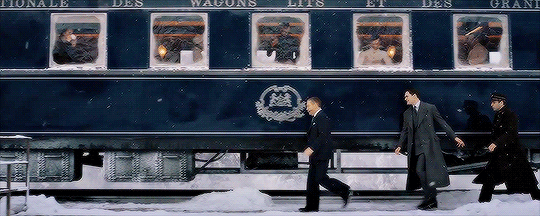Railway madness, ghost trains and the Orient Express: How the train became scary
We're usually found revelling in the delights of rail travel. But there's a sinister side to the locomotive that's long been a popular motif amongst nail-biting who-dun-its, jump-scare thrillers and the choice transport for a certain school of witchcraft and wizardry. Whether it’s a secluded night train rattling through misty landscapes or the anonymous faces of suspecting fellow passengers, trains hold a unique place in spine-chilling storytelling. But what is it about train travel that makes it such a timeless source of spooky inspiration?
Early fears of the locomotive
With the dawn of the railways in the early 19th century, trains quickly became a symbol of progress. But they also introduced new fears among those unaccustomed to the speed and power of the locomotive (including the Victorian belief of “railway madness” caused by travelling at speeds over 20mph) . Trains represented both wonder and anxiety: the simple idea of travelling faster than previous comprehension kickstarted the legacy of the train as a frightening trope.
Illustrated Police News, 11 May 1889
Confined carriages
Early mystery novels captured the isolation and claustrophobia of a train setting, and the train itself became a harbinger of doom. The motion and confinement made them ideal for stories involving crime or supernatural occurrences, tapping into the fear of the unknown as trains carried passengers into unfamiliar or dangerous territories. A bit like a sleeper carriage heading to Penzance. We’ll save you the suspense: pirate legends and smugglers’ paths await for you at the end of the line.
The Orient Express glamour of the murder mystery
By the early 20th century, the luxury train had become central to many famous murder mysteries, particularly during the Golden Age of Detective Fiction. It made a contrasting backdrop to the chilling events that would unfold in the confines of the Art-deco carriages, with an intriguing cast of strangers from different walks of life. The real-life Venice-Simplon Orient Express doesn’t guarantee an on-board detective, but you can still expect lavish cabins, opulent interiors and the finest white-glove service.
Anonymity
Post-WW2, trains began to feature in more psychological thrillers and horror stories. The anonymity of train passengers meant passengers could find themselves travelling next to all manner of sinister characters. Films explored how chance encounters on a train could spiral into sinister events, turning an ordinary journey into a life-or-death affair.
The train as a metaphor
By the late 20th century, particularly in horror and dystopian science fiction, trains were no longer just a backdrop to a sinister story, but a metaphor for broader psychological themes. Passengers could expect to find themselves toward an unknown or dangerous fate. Where to? How about a journey to Norway's far-flung village of Hell?
Norway's 'Hell' station
Blurring reality
In the 21st century, the use of trains in thrillers, mysteries, and horror has continued. The modern commuter train provides a setting where characters can spy on each other, project their fears, and misinterpret events: the prime ingredients for a gripping psychological thriller. And if you don’t fancy yourself as a sinister train observer, Paula Hawkins's novel remains a gripping page-turner for any train journey.
What stories lie behind the other side of the carriage doors? Our Concierge team will help you find out. As evenings draw in and October looms, your carriage awaits.





